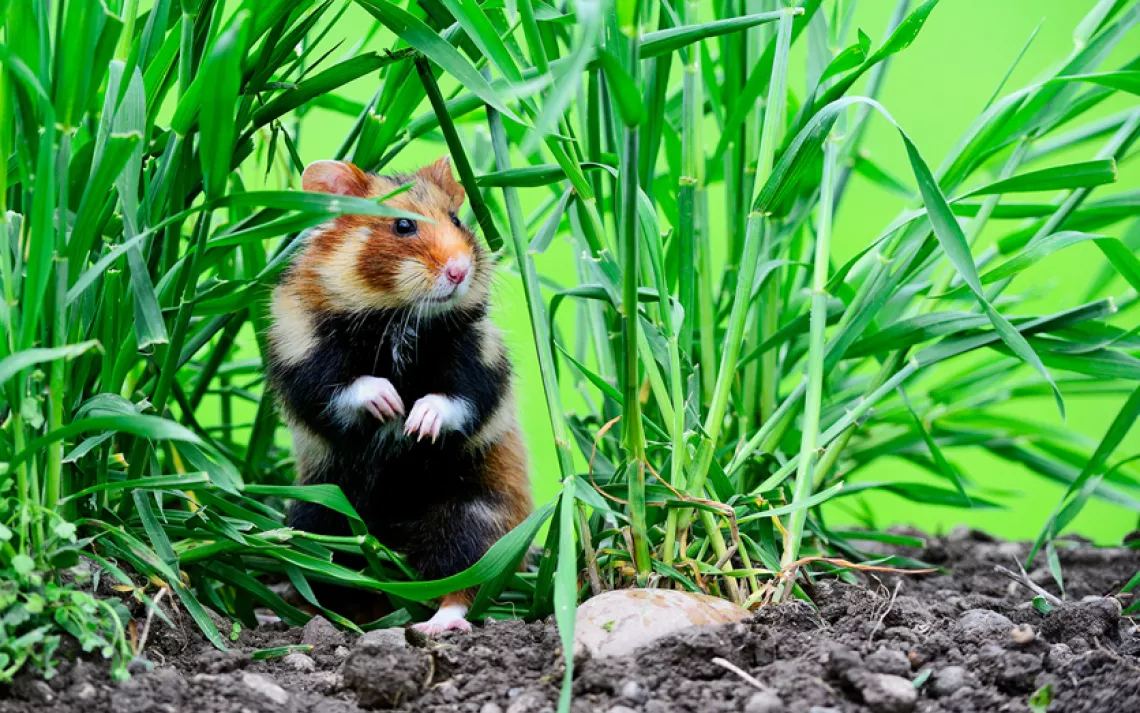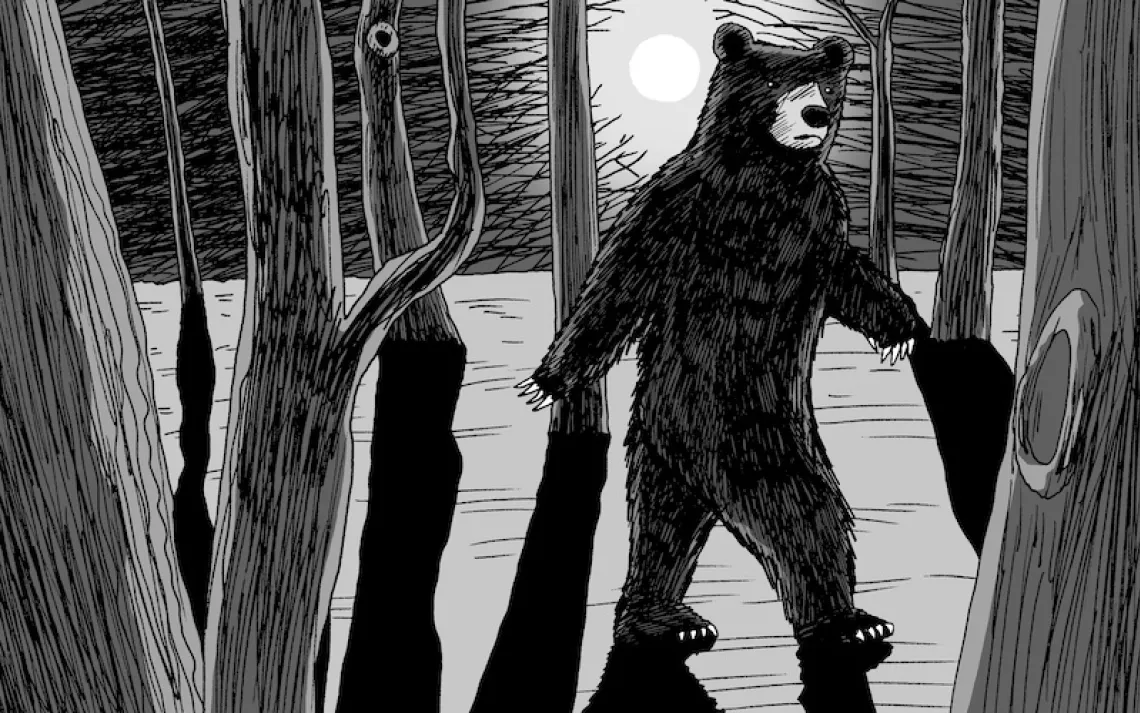Wild Hamsters of Alsace

Photo by Eric Baccega/Nature Picture Library (captive)
The fearsome European hamster (Cricetus cricetus, a.k.a. black-bellied hamster or Strasbourg marmot) is described by BBC Wildlife as "somewhat laddish" and "bolshy in temperament" (i.e., macho and aggressive). Solitary males readily fight each other, females attack suitors they don't like the smell of, and woe to the voles that encounter these one-pound, omnivorous bruisers. This burly cousin to the petite pet-store staple once ranged the Eurasian steppes but transitioned to cultivated fields in France, Belgium, and Germany. There they are crucial to ecosystem health, largely because of their tastiness. Foxes, raptors, and other predators account for up to 90 percent of a hamster colony's annual mortality.
But now the diverse farms of France's Alsace region have been converted to a monoculture of corn, and hamster numbers are plummeting. France has started a captive-breeding program, which aims to release 500 hamsters each year into fields that farmers are paid not to harvest. Every female is implanted with a tiny tracking device, but since laboratory-bred hamsters lack the defensive smarts of their sauvage brethren, many transmissions end in the gullets of predators. Savvier wild hamsters, sadly, are failing to breed with the gusto of their lab cousins, leaving the species's prospects up to the hamster wheel of fortune.
 The Magazine of The Sierra Club
The Magazine of The Sierra Club







